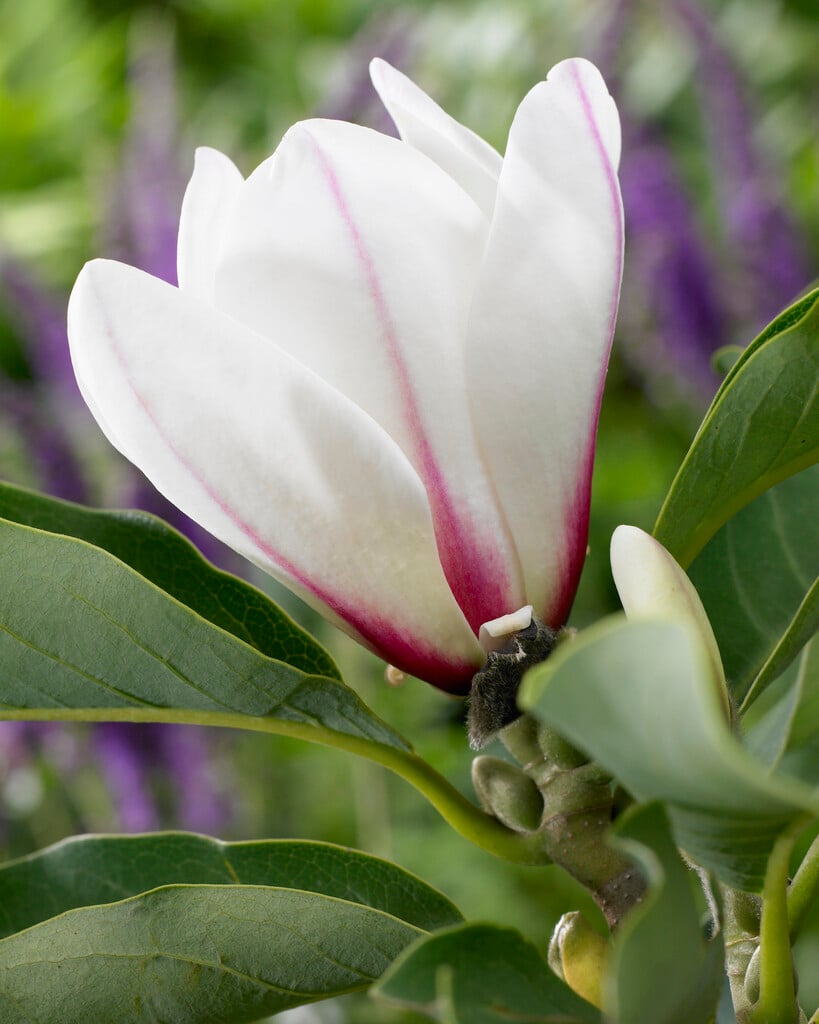Magnolia 'Sunrise'
magnolia 'Sunrise'
A compact, upright, deciduous shrub or small tree to 2m in height with ovate to elliptic leaves and large, fragrant, creamy-white goblet-shape flowers with reddish-pink markings at the base of each petal in spring before the foliage emerges

Buy this plant
Size
Ultimate height
1.5–2.5 metresTime to ultimate height
10–20 yearsUltimate spread
1.5–2.5 metresGrowing conditions
Moisture
Moist but well–drained, Well–drainedpH
Acid, NeutralColour & scent
| Stem | Flower | Foliage | Fruit | |
| Spring | Cream White Pink | Green | ||
|---|---|---|---|---|
| Summer | Green | |||
| Autumn | Green | |||
| Winter |
Position
- Full sun
- Partial shade
Aspect
East–facing or South–facing or West–facing
Exposure
Sheltered Hardiness
H6Botanical details
- Family
- Magnoliaceae
- Native to GB / Ireland
- No
- Foliage
- Deciduous
- Habit
- Columnar upright
- Genus
Magnolia can be deciduous or evergreen trees or shrubs, with large, showy, often fragrant flowers, often opening before the leaves, and sometimes followed by colourful cone-like fruit
- Name status
Unresolved
How to grow
Cultivation
Grow in moist but well drained neutral to acid soil in full sun or light shade with shelter from cold winds. Late frost may damage the flower buds. Mulch in spring to keep the soil moist. For more information see magnolia cultivation advice
Propagation
Suggested planting locations and garden types
- Architectural
- City and courtyard gardens
- Cottage and informal garden
- Flower borders and beds
Pruning
Pruning Group 1. See magnolia pruning
Pests
May be susceptible to scale insects, horse chestnut scale and capsid bug
Diseases
May be susceptible to coral spot, phytophthora, grey moulds, honey fungus, a virus or fungal leaf spot
Get involved
The Royal Horticultural Society is the UK’s leading gardening charity. We aim to enrich everyone’s life through plants, and make the UK a greener and more beautiful place.